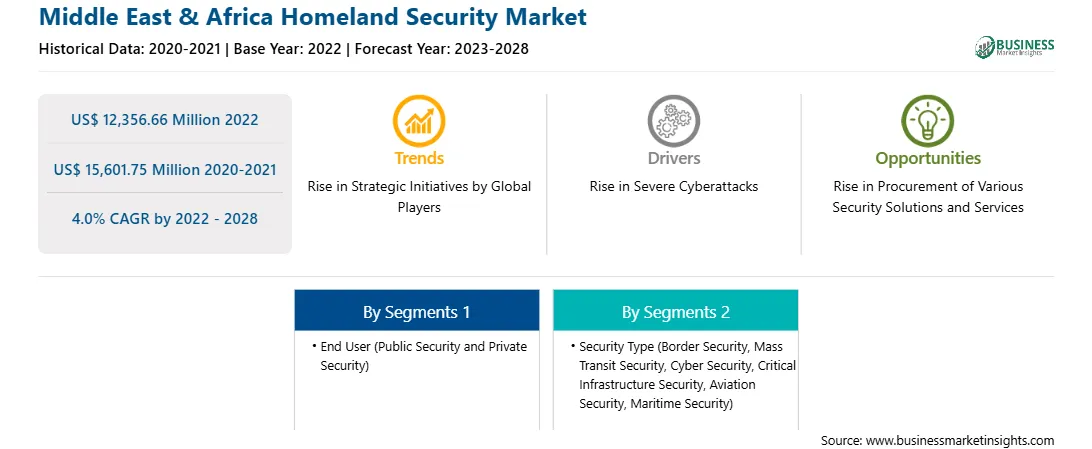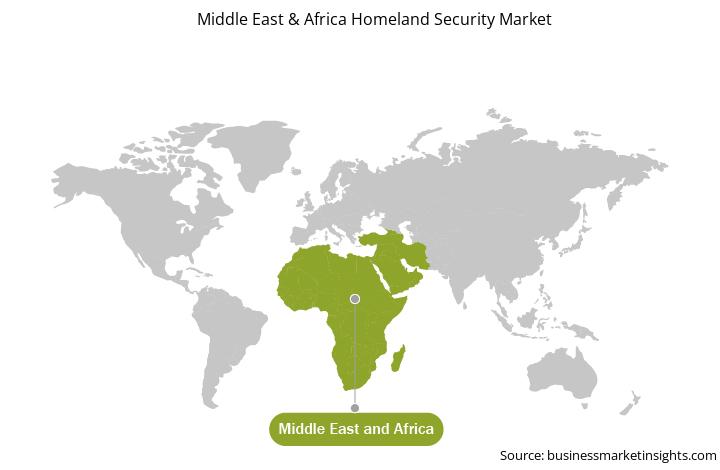Increase in Number of Airports and Passenger Traffic
The growing number of airports and air passenger traffic is influencing the demand for aviation security solutions. According to International Civil Aviation Organization (ICAO), the number of air passengers traveling between January to April 2022 showcased an increase of 65% compared to the same period in 2021. The total flight departures also increased by 30% across the region. The analysis by the organization also states that the total seating capacity offered by the airline also increased by 20% in the same time frame. Rising purchasing power of the regional population, increasing trend of regional tourism, and surging business travel are among the major reasons contributing to the growth of air traffic across the region. The rise in air traffic is directly influencing the need for more efficient aviation security solutions to ensure safety across all airports. Moreover, stringent government regulations on airport security to ensure proper checks of all individuals entering and leaving the nation are also enhancing the demand for aviation security solutions. Additionally, several nations are significantly investing in developing new airport infrastructure, further driving the demand for aviation security solutions. Various countries are experiencing high investment in the construction and expansion of airport infrastructures. Thus, the rise in investment in airport infrastructure development, coupled with an increase in air passenger traffic, is driving the demand for aviation security solutions, thereby contributing to the Middle East & Africa homeland security market growth.
Market Overview
The growth of the Middle East & Africa homeland security market is attributed to the increase in the procurement of advanced biometrics, communication systems, warfare systems, border deployed security systems, crisis management systems, critical infrastructure security systems, aviation security systems, mass transit security systems, cyber security systems, and maritime security systems to deal with the constantly rising cross-border conflicts, cyberattacks, terrorism, and civil wars across the region. The region has many airports and airlines' security services, fueling the demand for homeland security across the region. The region has some of the largest airlines that operate worldwide, such as Qatar Airways, Air Arabia, Emirates, Etihad Airways, and Kuwait Airways. The airports and airlines are generating the demand for airport security, which is boosting the homeland market growth in the region. Further, the Middle East & Africa homeland security market is growing due to the investments in multiple projects and recent developments, such as the Dubai Expo 2020 in the UAE and the 2022 FIFA World Cup in Qatar. The advanced technologies' economic growth and investment in infrastructure development in the region are also driving the market. The investments in infrastructure development include residential and commercial construction, transportation infrastructure, and public utilities. The Department of Homeland Security (DHS) and the UAE expand security cooperation between the US and each nation for the advance key homeland security agreements and objectives in the country. In Qatar, Under Secretary Silvers signed security arrangements with the State of Qatar, engaged with key Qatari government partners on a range of joint security issues, and reaffirmed DHS's commitment to enhance Qatar's security for the FIFA World Cup Qatar 2022. In the UAE, the Under Secretary engaged with key representatives from the Ministry of the Interior and the Dubai Police in July 2022. Further, in June 2019, Elbit Systems, an Israeli defense electronics company, revealed that the US Customs and Border Protection had given its US subsidiary a US$ 26 million contract to deploy a multi-sensor system to monitor the US-Mexico border. In Arizona, Elbit will install an Integrated Fixed Towers (IFT) system. Moreover, in 2022 the Saudi National Cybersecurity Authority (NCA) announced the signing of a Memorandum of Understanding (MoU) for Cybersecurity Cooperation with the U.S. Department of Homeland Security (DHS), Cybersecurity and Infrastructure Security Agency (CISA). Such initiatives in the Middle East & Africa region are propelling the growth of the Middle East & Africa homeland security market.

Strategic insights for the Middle East & Africa Homeland Security provides data-driven analysis of the industry landscape, including current trends, key players, and regional nuances. These insights offer actionable recommendations, enabling readers to differentiate themselves from competitors by identifying untapped segments or developing unique value propositions. Leveraging data analytics, these insights help industry players anticipate the market shifts, whether investors, manufacturers, or other stakeholders. A future-oriented perspective is essential, helping stakeholders anticipate market shifts and position themselves for long-term success in this dynamic region. Ultimately, effective strategic insights empower readers to make informed decisions that drive profitability and achieve their business objectives within the market.

| Report Attribute | Details |
|---|---|
| Market size in 2022 | US$ 12,356.66 Million |
| Market Size by 2028 | US$ 15,601.75 Million |
| Global CAGR (2022 - 2028) | 4.0% |
| Historical Data | 2020-2021 |
| Forecast period | 2023-2028 |
| Segments Covered |
By End User
|
| Regions and Countries Covered | Middle East and Africa
|
| Market leaders and key company profiles |
The geographic scope of the Middle East & Africa Homeland Security refers to the specific areas in which a business operates and competes. Understanding local distinctions, such as diverse consumer preferences (e.g., demand for specific plug types or battery backup durations), varying economic conditions, and regulatory environments, is crucial for tailoring strategies to specific markets. Businesses can expand their reach by identifying underserved areas or adapting their offerings to meet local demands. A clear market focus allows for more effective resource allocation, targeted marketing campaigns, and better positioning against local competitors, ultimately driving growth in those targeted areas.

Middle East & Africa Homeland Security Market Segmentation
The Middle East & Africa homeland security market is segmented into end user, security type, and country.
Based on end user, the market is bifurcated into public security and private security. The public security segment registered the larger market share in 2022.
Based on security type, the market is segmented into border security, mass transit security, cyber security, critical infrastructure security, aviation security, maritime security, and others. The cyber security segment held the largest market share in 2022.
Based on country, the market is segmented into Saudi Arabia, UAE, South Africa, and rest of Middle East & Africa. Rest of Middle East & Africa dominated the market share in 2022.
Elbit Systems Ltd; IBM Corporation; Lockheed Martin Corporation; Leidos; Thales Group; Teledyne FLIR LLC; Northrop Grumman Corporation; Raytheon Technologies Corporation; Textron Systems; and General Dynamic Information Technology, Inc. are the leading companies operating in the Middle East & Africa homeland security market in the region.
The Middle East & Africa Homeland Security Market is valued at US$ 12,356.66 Million in 2022, it is projected to reach US$ 15,601.75 Million by 2028.
As per our report Middle East & Africa Homeland Security Market, the market size is valued at US$ 12,356.66 Million in 2022, projecting it to reach US$ 15,601.75 Million by 2028. This translates to a CAGR of approximately 4.0% during the forecast period.
The Middle East & Africa Homeland Security Market report typically cover these key segments-
The historic period, base year, and forecast period can vary slightly depending on the specific market research report. However, for the Middle East & Africa Homeland Security Market report:
The Middle East & Africa Homeland Security Market is populated by several key players, each contributing to its growth and innovation. Some of the major players include:
The Middle East & Africa Homeland Security Market report is valuable for diverse stakeholders, including:
Essentially, anyone involved in or considering involvement in the Middle East & Africa Homeland Security Market value chain can benefit from the information contained in a comprehensive market report.